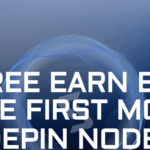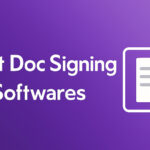In this article, I will explain the primary differences between a bridging aggregator operated by DAOs and one run by corporations. With continual advancements in blockchain technology, selecting an appropriate cross-chain solution becomes vital.
We will analyze the operations of the two models, their governance frameworks, advantages, disadvantages, and other relevant factors to help you determine which alternative best suits your ethos and objectives in the Web3 environment.
Overview
Bridging aggregators serve as vital connectors in the ever-growing scope of blockchain technology and decentralized finance (DeFi). These platforms solve the years-long problem blockchain interoperability by enabling the movement of assets between different chains.
With the advancement of the market, two different types of models of bridging aggregators surfaced: the DAO-run (Decentralized Autonomous Organization) bridging aggregator and the corporate-run (centralized) aggregator.
Each model presents distinct benefits and challenges, which impact users, developers, and the DeFi ecosystem at large.
What is a Bridging Aggregator
A bridging aggregator is a one-stop shop for using multiple cross-chain bridges and liquidity sources. It enables users to transfer assets of different blockchains with great efficiency. It performs automatic route selection based on the speed, cost and reliability.
What Is Corporate Aggregator
A corporate aggregator is an aggregator where a single centralized group or private entity manages the entire platform. All updates, collaborations, changes to fees, and integrations are done within the company by managers, programmers, or shareholders.
Unlike DAO-run platforms, corporate aggregators do not invite the wider user community for participation in governance or long term planning.
They may execute tasks quickly and provide seamless user experiences, but tend to offer little transparency, and carry risks due to centralization as well as regulatory scrutiny.

| Aspect | DAO-Run Bridging Aggregator | Corporate Bridging Aggregator |
|---|---|---|
| Governance | Community-driven via proposals and on-chain voting | Centralized decision-making by internal team or executives |
| Transparency | High; decisions and updates are visible on-chain | Low; decisions made behind closed doors |
| Speed of Execution | Slower due to voting and coordination | Faster due to centralized control |
| Funding | Community treasury, grants, token incentives | Venture capital, private funding, revenue |
| User Involvement | High; users can vote and shape the protocol | Minimal; users have no direct influence |
| Resilience to Censorship | Strong; no central authority to pressure or censor | Weak; central entity can be targeted or regulated |
| User Experience (UX) | May lack polish; varies based on contributors | Professional UX, support, and branding |
| Security Risks | Governance attacks, slow response to threats | Custodial risks, central point of failure |
| Flexibility and Agility | Less agile; bound by proposals and consensus | Highly agile; can quickly adapt or pivot |
| Long-term Vision | Aligned with decentralization and open access | Profit-driven with potential for walled-garden models |
| Examples | LI.FI (DAO in progress), DeBridge (community-led roadmap) | Squid Router, Socket (corporate-led, some decentralization planned) |
Corporate Aggregator: Efficiency with Trade-Offs
DAO-managed aggregators are more decentralized since they use community-driven governance. Crucial decisions like protocol updates, fee modifications, and treasury spending are applied via on-chain voting by the token holders.
This model adds to the inclusiveness, transparency, and resistance to censorship. On the other hand, corporate aggregators tend to be governed by a centralized set of people who make community-blind decisions behind closed doors.
While this can sometimes hasten the process and comes with streamlined oversight, it does undermine decentralization. Some corporate aggregators may attempt to adopt decentralized features over time, but the primary governance structure is still preserved, which reduces user impact in the decision-making processes.
Can a platform be both DAO-run and corporate?
Yes, in order to refine the user experience, obtain funding, and accelerate development, some projects begin as a centralized platform. This form of initial centralization helps teams achieve product-market fit.
With the incorporation of governance tokens, community voting, and decentralized treasuries, these projects can shift into hybrid models. The intention is to slowly shift operational control to the user base while retaining efficient functionality.
These hybrid aggregators seek to capture the rapid pace of traditional corporates while retaining the open nature of DAO platforms, merging the best of both worlds for users.
Pros and Cons Comparison Dao-Run Bridging Aggregator Vs Corporate Aggregator

| Category | DAO-Run Bridging Aggregator | Corporate Bridging Aggregator |
|---|---|---|
| Pros | ||
| Decentralization | Highly decentralized governance, community-driven decisions | Efficient decision-making through centralized leadership |
| Transparency | On-chain voting and open discussions promote transparency | Clear product direction with consistent updates |
| Community Control | Users can propose and vote on changes, shaping the platform’s future | Strategic decisions made quickly without lengthy governance processes |
| Censorship Resistance | No single point of control or failure, harder to censor | Easier to implement security patches or emergency fixes rapidly |
| Innovation Friendly | Open-source ethos encourages collaboration and ecosystem growth | Access to funding, partnerships, and professional talent |
| Cons | ||
| Decision Speed | Slower execution due to proposal and voting timelines | Decisions made without community input or transparency |
| Governance Risk | Possibility of voter apathy, manipulation, or governance attacks | Centralization increases regulatory risks and potential for censorship |
| Resource Limits | Often rely on community funding, which may be inconsistent | Profit-focused, may prioritize business interests over users |
| UX/UI & Support | May lack polished interfaces or professional customer service | Typically offers better design, user support, and onboarding |
| Scalability | Coordination challenges can hinder rapid scaling | Easier to scale with structured leadership and VC backing |
Which One Is Best Dao-Run Bridging Aggregator Vs Corporate Aggregator
Your priorities will determine the better option for you between a corporate bridging aggregator and DAO-run bridging aggregator. If you lean towards valuing decentralization, community-governance, transparency, and even censorship resistance, then a DAO-run aggregator is favorable.
It is aligned with the foundation of Web3, but its execution is slower, and the resources are limited. As for the corporate side, user experience, speed and professional aid; all come bundled with a more efficient and faster developing centralized corporate aggregator.
The downside, however, is that it has centralization risks and limited user control. In the end having both approaches combined in a hybrid model could serve the best balance for long term sustainability.
Conclusion
In closing, The decision on whether to choose a DAO-run or a corporate bridging aggregator purely depends on individual preferences.
A DAO-run aggregator works best if you prefer community-driven governance. It embodies the essence of Web3 even though it might be low on resources and slow to execute decisions.
Conversely, a corporate aggregator is best if one gives emphasis on user interface, speed, and professional help as it is efficient and fast to improve services. Unfortunately, it has centralization problems and little user control.
In the end, a combination of both approaches seems to be the best option for balance in user freedom and self-governance and endurance over time.
FAQ
Which one executes faster?
Corporate aggregators act faster due to centralized decision-making.
Which is more transparent?
DAO-run models are more transparent, with decisions visible on-chain.
Which is safer?
DAO-run models resist censorship; corporates offer faster emergency responses but have central points of failure.









